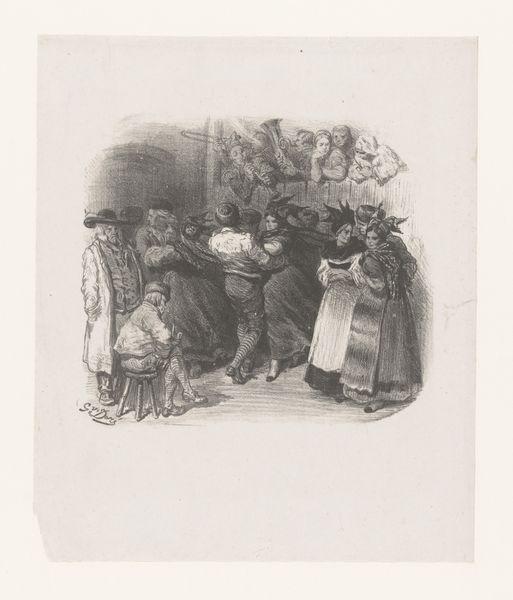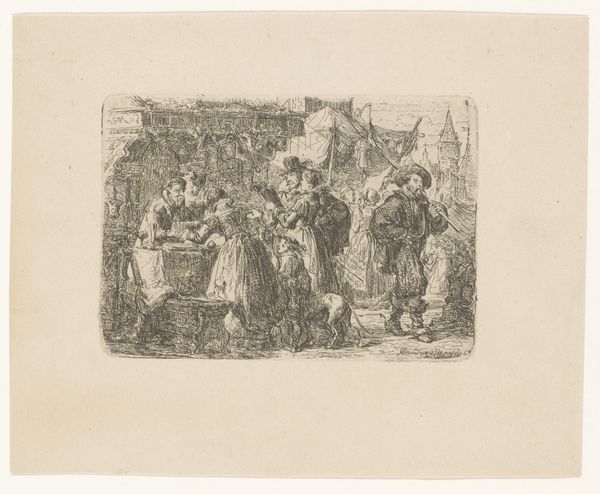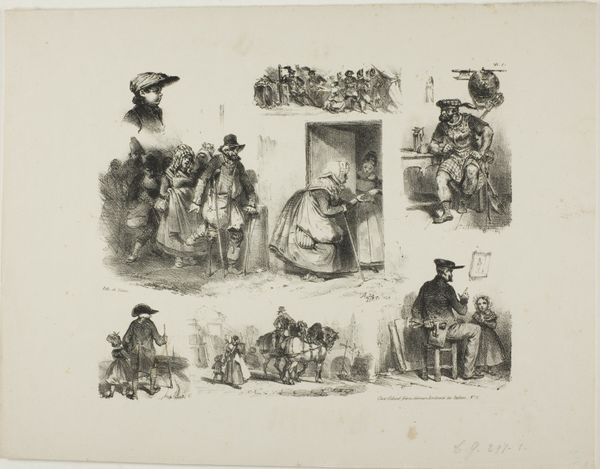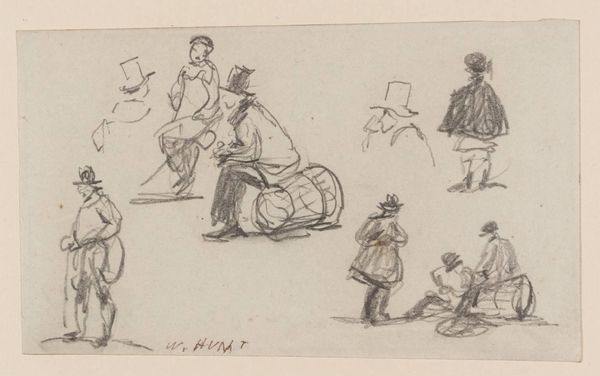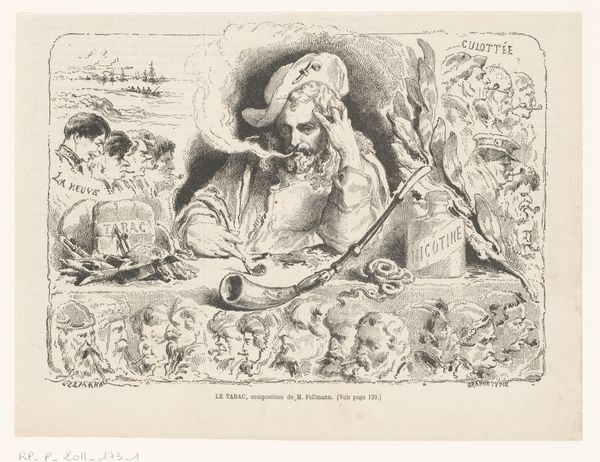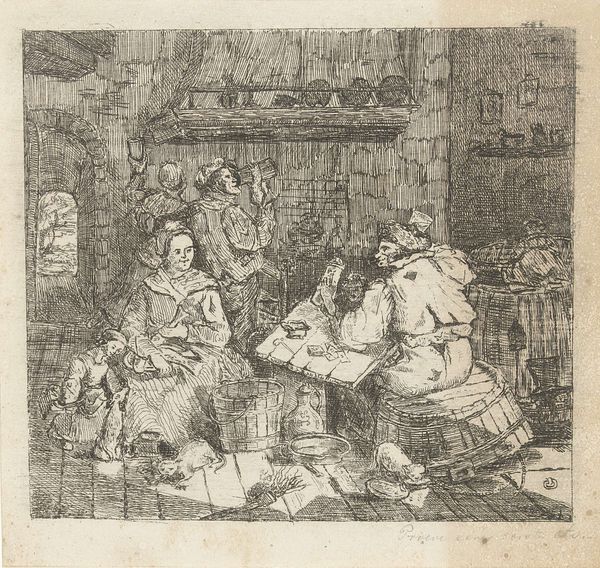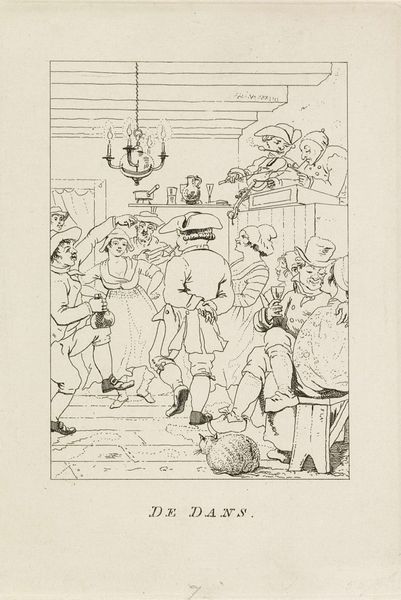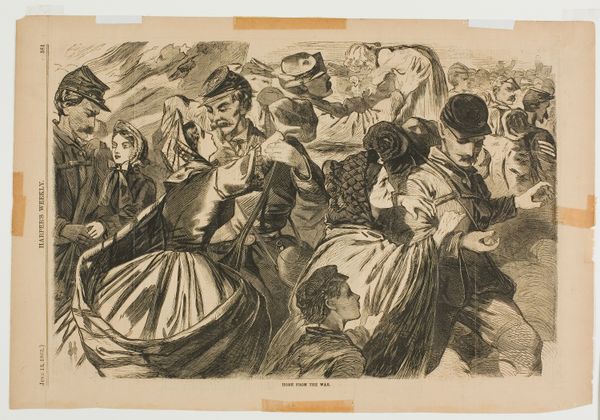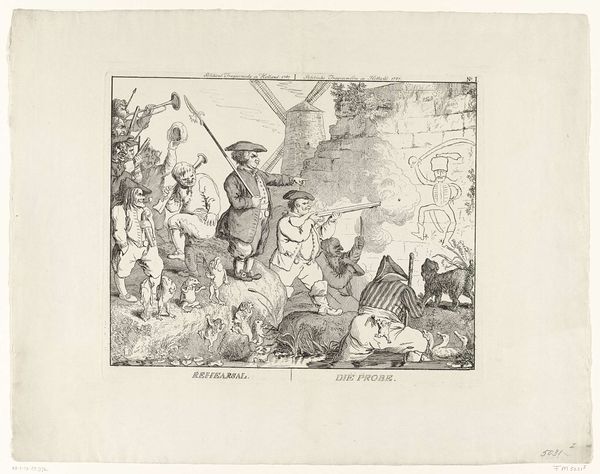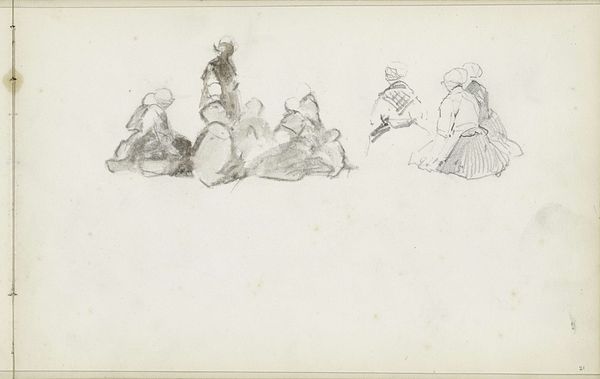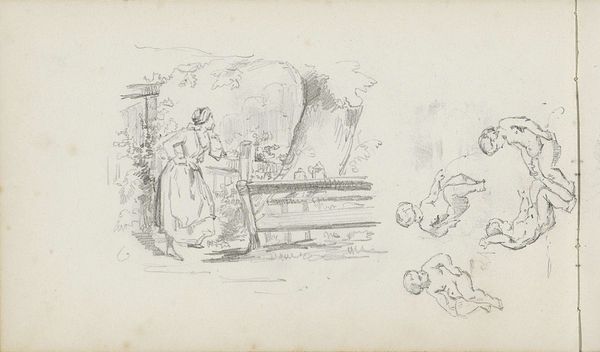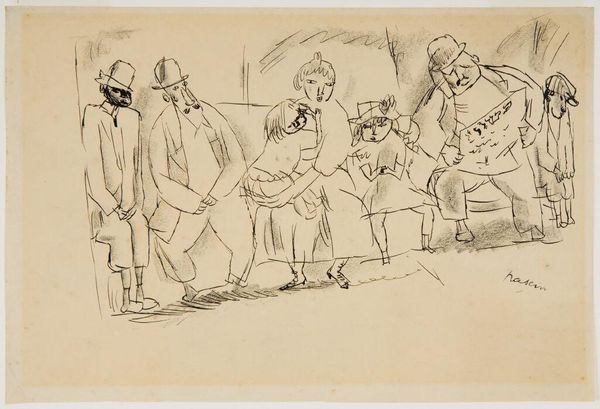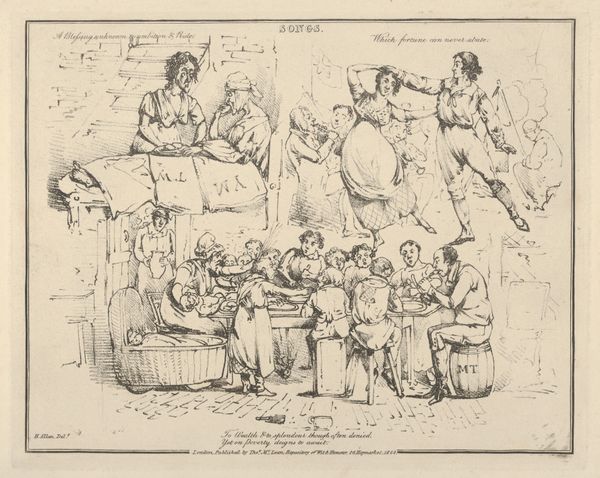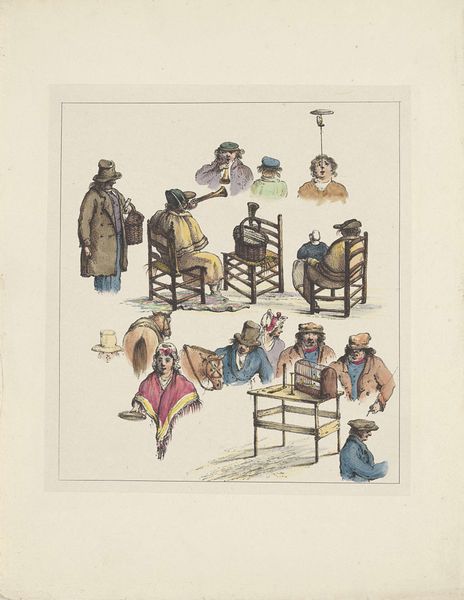
drawing, graphite, pen
#
portrait
#
drawing
#
quirky sketch
#
pen sketch
#
sketch book
#
personal sketchbook
#
idea generation sketch
#
sketchwork
#
pen-ink sketch
#
graphite
#
sketchbook drawing
#
pen
#
genre-painting
#
storyboard and sketchbook work
#
sketchbook art
Dimensions: height 133 mm, width 166 mm
Copyright: Rijks Museum: Open Domain
Editor: Here we have Isaac Weissenbruch’s drawing, "Verschillende soorten hoeden," created sometime between 1836 and 1912, currently held at the Rijksmuseum. It’s a fascinating study of various hats, rendered in pen, graphite, and ink. It looks almost like a reference sheet, or even something you might find in a tailor's shop. What catches your eye about it? Curator: As a materialist, I'm immediately drawn to the means of production evident in this sheet. It appears to be a page from a sketchbook. Consider the labor involved— the careful rendering of each hat, the specific selection of materials like pen and graphite. It wasn’t conceived as "high art", but what was the social context surrounding fashion at the time, and how might these drawings play into production for the burgeoning middle classes? Was Weissenbruch intending a catalogue or was he merely captivated by the headwear he observed in his locale? Editor: That's a fantastic way to consider it. So it is more about what went into making of the artwork than necessarily the image itself? Curator: Exactly. And also what will come out. Think about the paper—its manufacturing process, its cost. The drawings represent consumption, as hats are fashion items for buyers. What materials are these hats made of, how do these sketches allow the maker to visualise and refine design ideas, before committing to the production process? The drawing process serves here as a step, not of "art", but in manufacturing. Editor: So the drawing serves less as a final aesthetic statement and more as a step within a much bigger cycle. That actually gives the image an even wider purpose. Curator: Precisely. The purpose lies not in the ‘art’, but the function. Consider the role and status of 'craft' at this period, and it can offer interesting reflections on our ideas around "high art". Editor: I hadn't thought about it that way. Now I can see this unassuming drawing as not just a collection of hats, but as a glimpse into 19th-century labor and consumerism. Curator: And it provokes questions regarding art and value. Is art only "art" if separate from work, materiality and production?
Comments
No comments
Be the first to comment and join the conversation on the ultimate creative platform.
